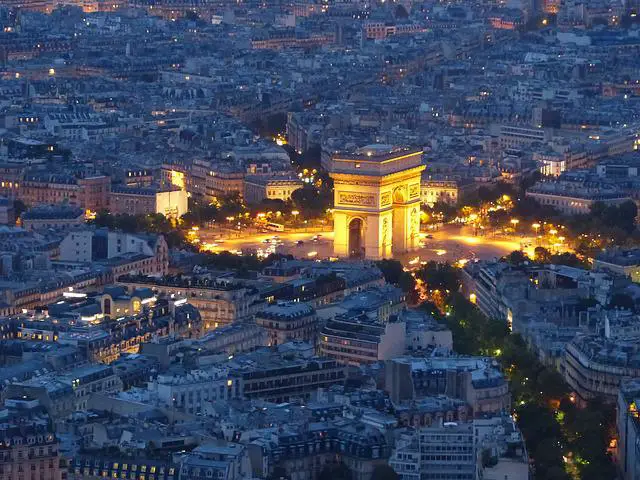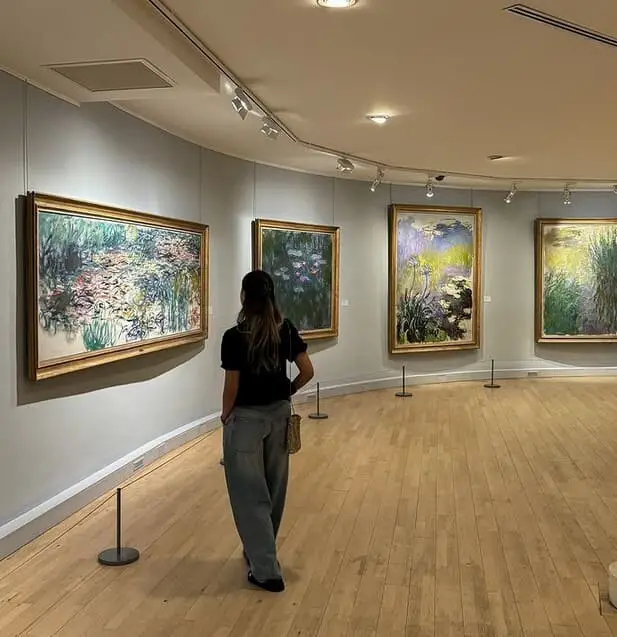The Louvre isn’t just about the Mona Lisa. It’s one of the biggest and most famous museums in the world, full of amazing art, hidden treasures, and cool history. Whether it’s your first visit or your fifth, here’s everything you need to know to make the most of it.
Table of Contents
Why the Louvre Is More Than Just the Mona Lisa
What Makes the Louvre So Special

The Louvre started as a fortress in the 12th century to protect Paris.
Later, it became a royal palace where kings and queens lived.
In 1793, it opened as a museum so everyone could see the royal art collection.
Today, you can walk through old palace rooms and see art from all over the world.
The World’s Most Visited Museum
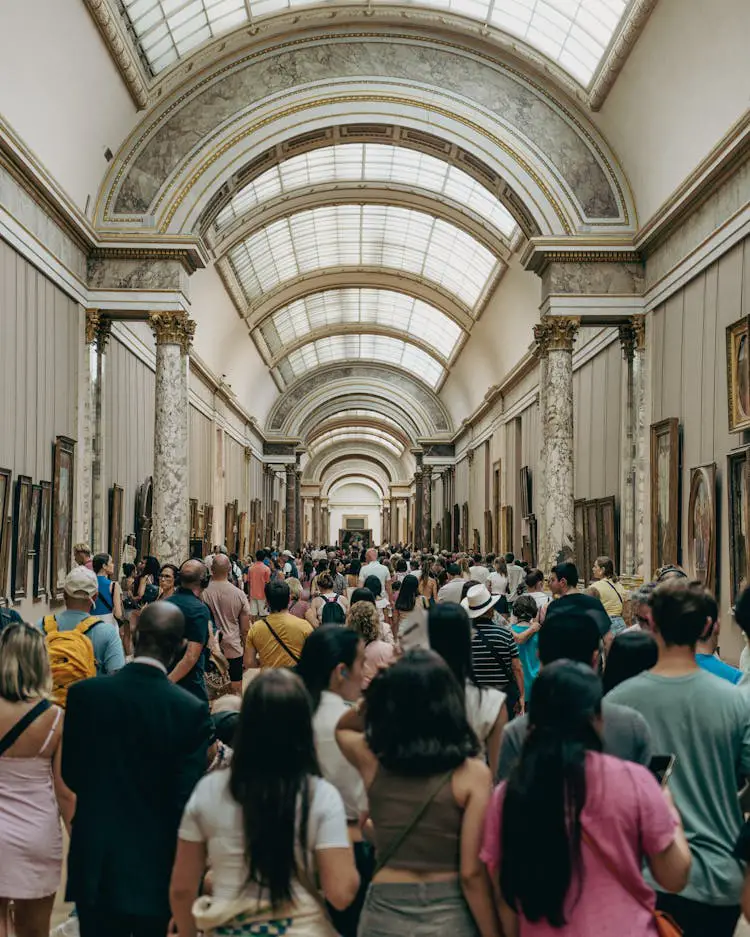
More than 8 million people visit the Louvre every year.
It’s the most visited museum on Earth.
People come from all over just to stand in front of famous artworks, explore ancient treasures, and take pictures in front of the glass pyramid.
Over 35,000 Artworks on Display
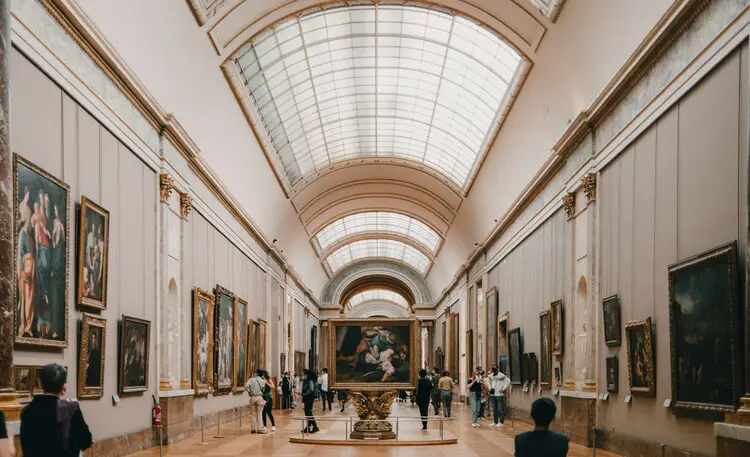
The museum has over 35,000 pieces of art on display.
These include paintings, sculptures, ancient artifacts, and more.
The collection covers thousands of years and comes from many cultures — from Ancient Egypt to Renaissance Europe.
Is It Worth Visiting If You’ve Already Been?
Yes, Here’s Why
The Louvre is so big, it’s impossible to see everything in one visit.
If you’ve been before, chances are you only saw the highlights.
Every visit can feel different.
You might explore a new section, discover an artist you didn’t know, or catch a temporary exhibition.
Exhibits and Areas People Often Miss
Many visitors go straight to the Mona Lisa and then leave.
But they miss incredible rooms like the Islamic Art pavilion or the Medieval Louvre ruins.
Some areas are quiet and peaceful, perfect for slowing down and really looking at the art.
The Most Famous Works You Can’t Miss: The Big Three
1. The Mona Lisa
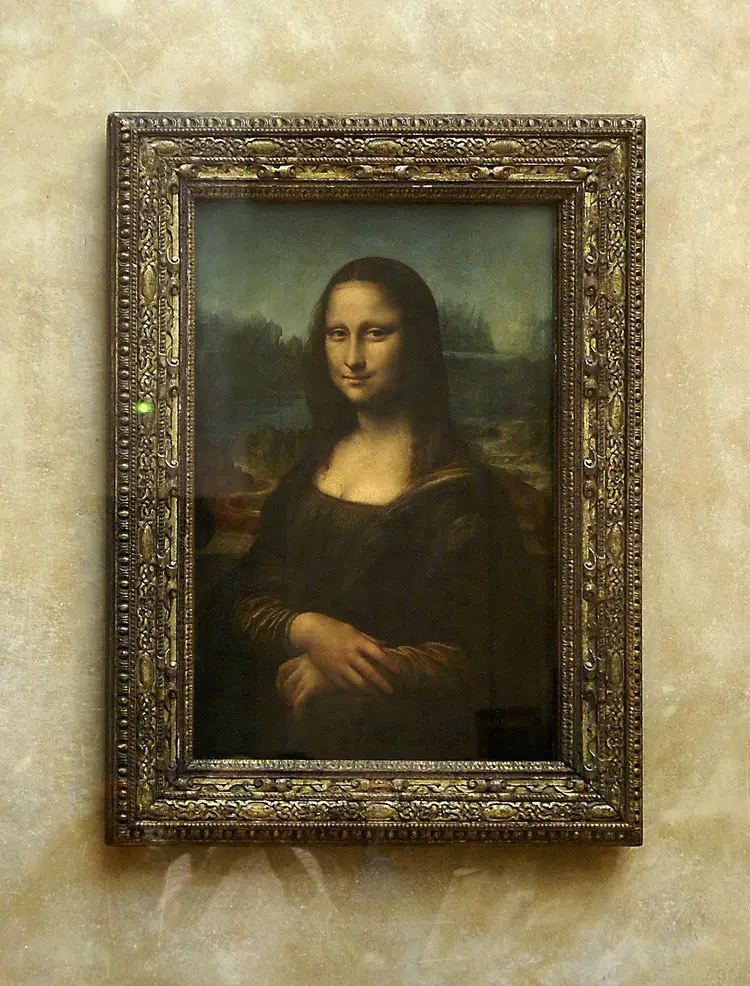
Painted by Leonardo da Vinci, this portrait is famous for its mysterious smile and the way her eyes seem to follow you.
It’s small, behind glass, and always surrounded by a crowd.
2. The Venus de Milo
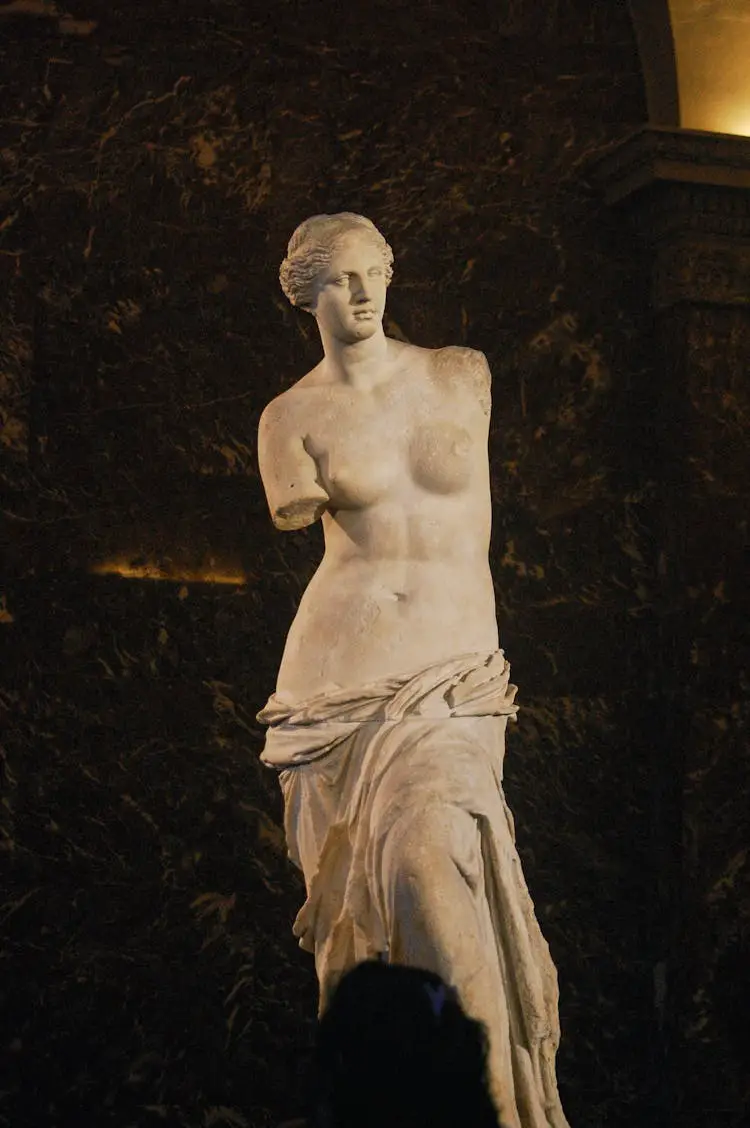
This marble statue of the Greek goddess Aphrodite is known for her graceful pose and missing arms.
She’s over 2,000 years old and still captures people’s attention today.
3. The Winged Victory of Samothrace
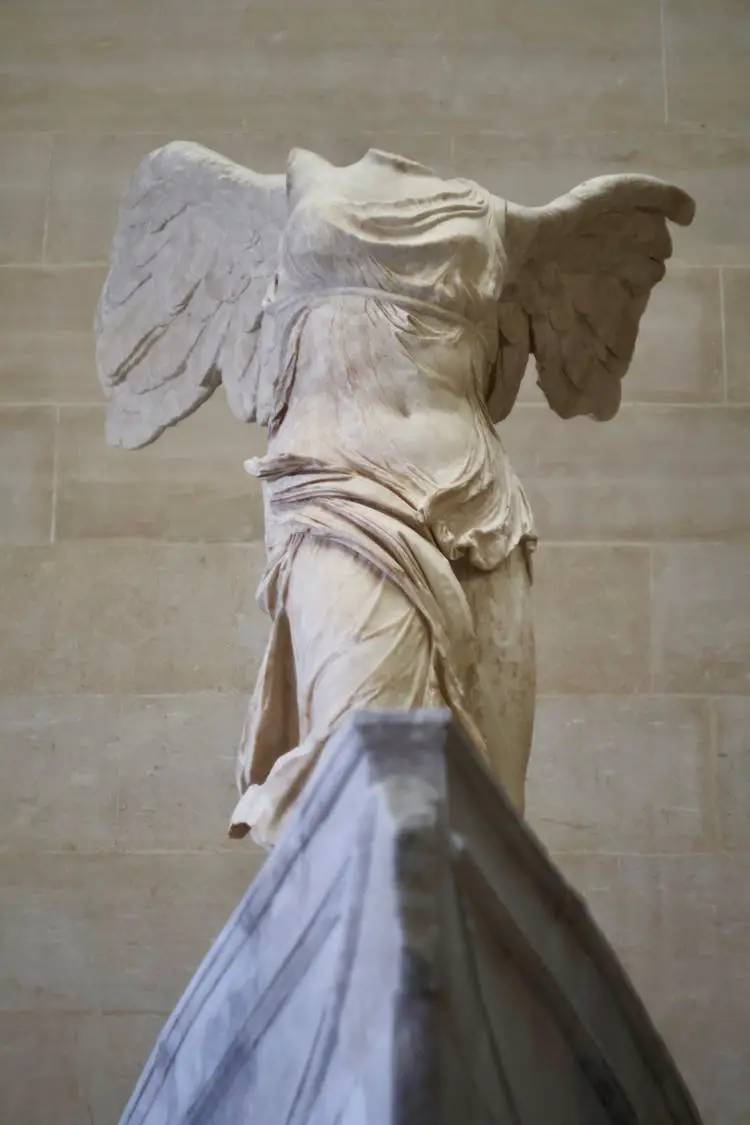
This dramatic sculpture shows the goddess Nike landing on a ship.
Her wings are spread wide, and her clothing looks like it’s blowing in the wind.
It stands at the top of a grand staircase.
Other Masterpieces to See
The Coronation of Napoleon by Jacques-Louis David
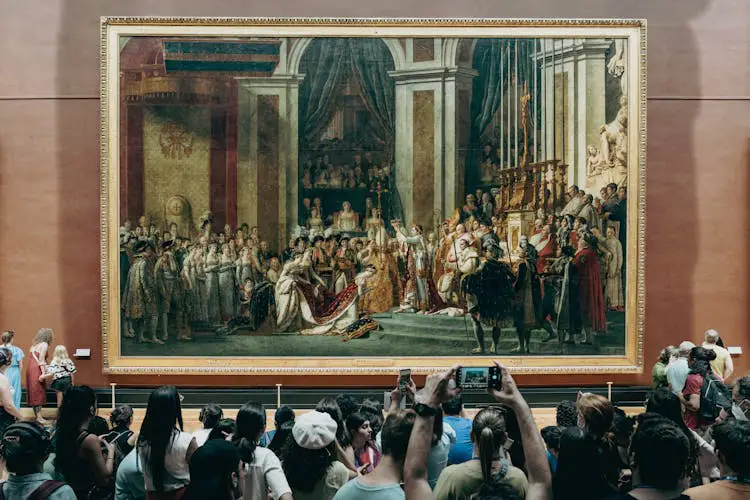
This massive painting shows the moment Napoleon crowned himself emperor in 1804, in Notre-Dame Cathedral in Paris.
The scene is full of rich details — from the robes and gold to the faces of important people watching the ceremony.
It’s over 6 meters tall and 10 meters wide, so it feels like you’re right there in the crowd.
Liberty Leading the People by Eugène Delacroix
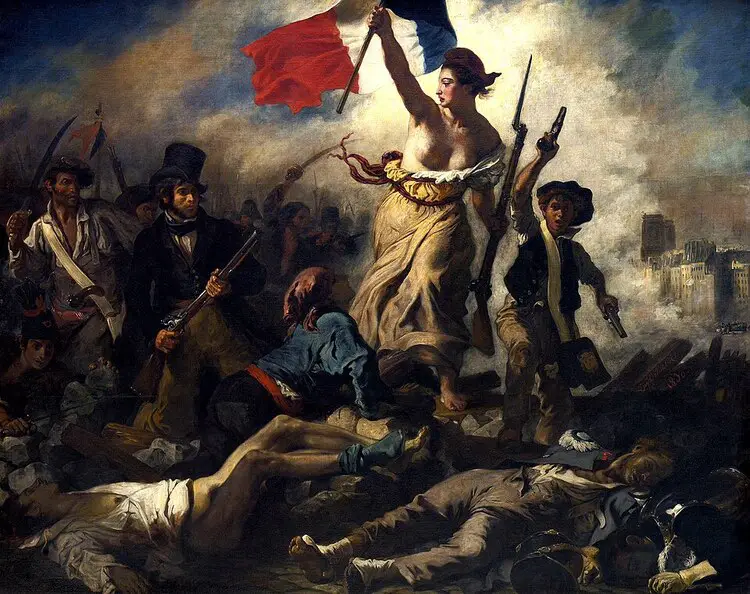
This famous painting shows the July Revolution of 1830 in France.
The woman in the center holds a French flag high and walks over fallen soldiers.
She represents freedom and the spirit of the people.
The scene is powerful, with smoke, movement, and strong emotions.
The Raft of the Medusa by Théodore Géricault

Based on a real shipwreck in 1816, this painting shows people on a raft after being stranded at sea.
Some are waving to a ship in the distance.
Others lie weak or dead. Géricault studied bodies and survivors to make the painting as realistic as possible.
It’s emotional and hard to forget.
The Lacemaker by Johannes Vermeer
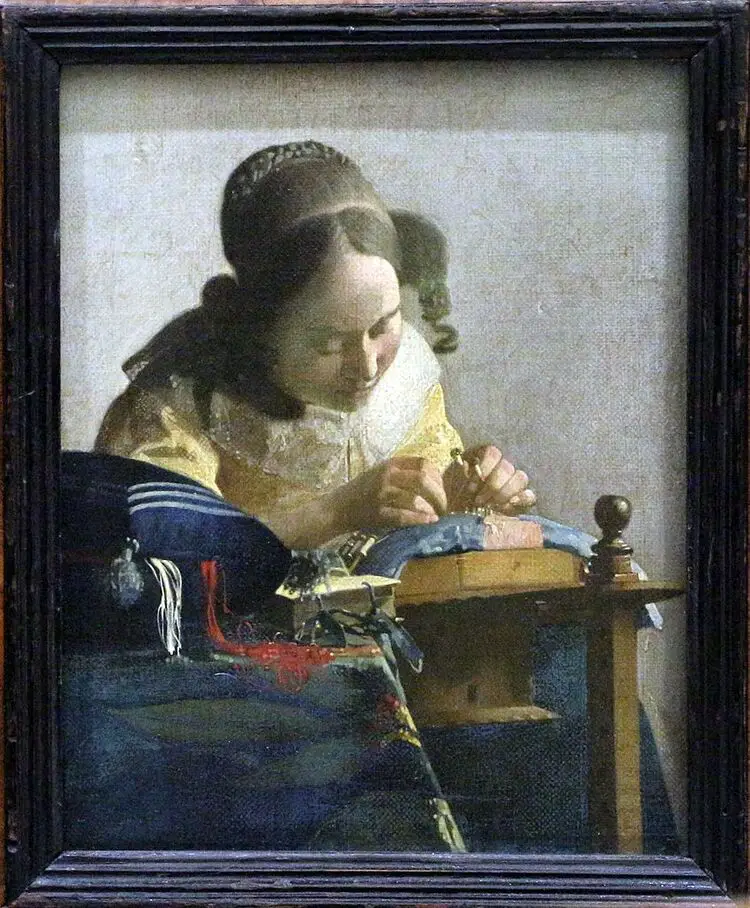
A small, quiet painting showing a girl working on lace with full concentration.
The colors are soft, and the details are very precise.
Vermeer is known for capturing peaceful, everyday moments like this one.
The Oath of the Horatii by Jacques-Louis David
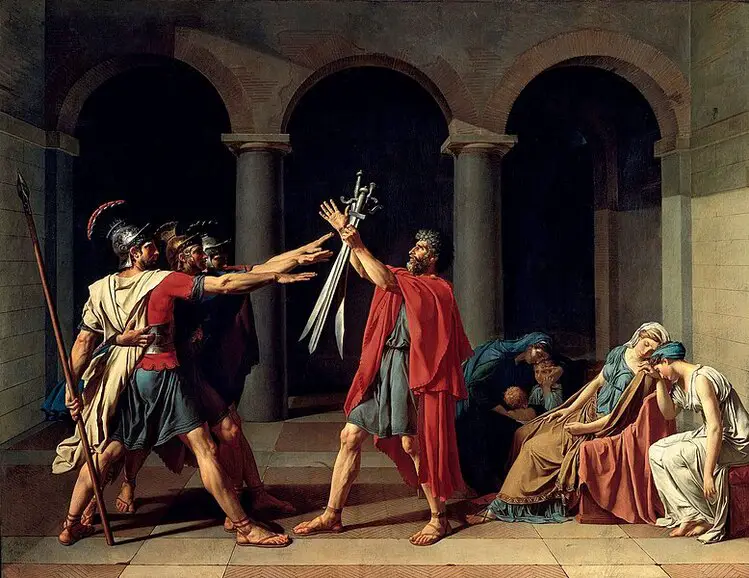
This painting tells a Roman story where three brothers promise to fight for their city.
Their father holds out their swords.
On the side, the women cry, knowing some will die.
The painting uses straight lines, strong light, and bold colors to show courage and sacrifice.
The Seated Scribe
Voir cette publication sur Instagram
This Egyptian statue is over 4,000 years old but still looks alive.
The man is seated cross-legged with a scroll, ready to write. His eyes are made from crystal, making his gaze very lifelike.
It shows the importance of knowledge in ancient Egypt.
The Code of Hammurabi
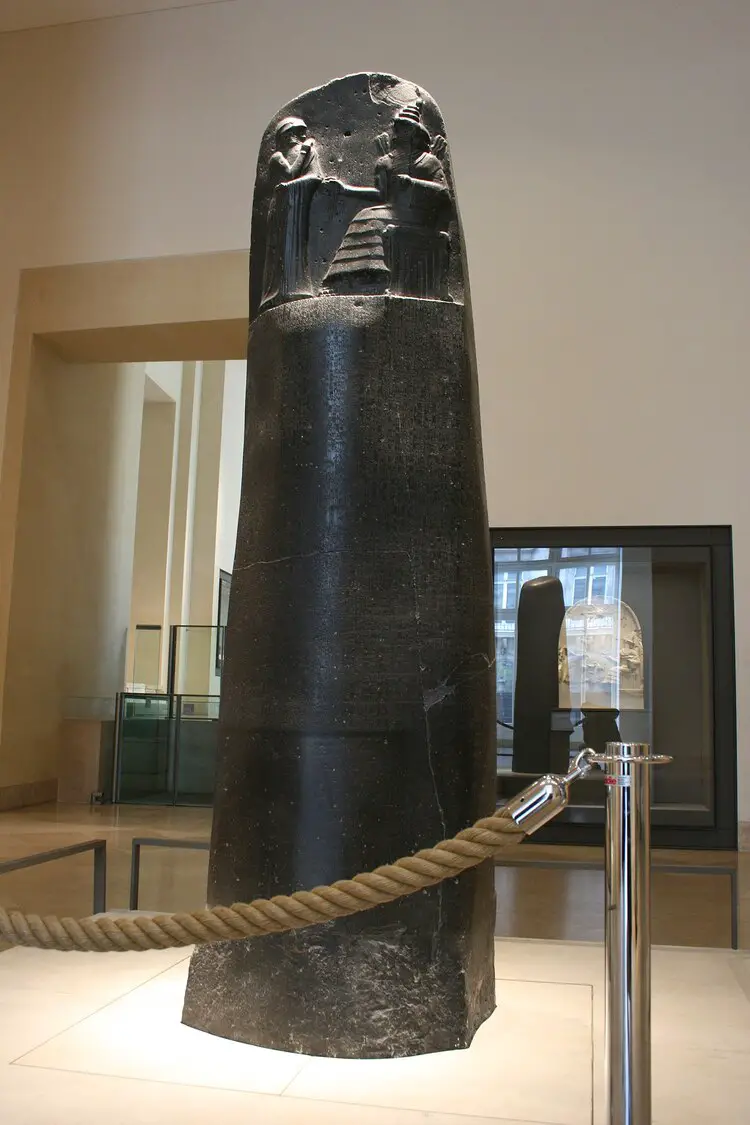
This tall black stone comes from ancient Babylon and is over 3,700 years old.
At the top, you see the king Hammurabi standing before a god.
Below, over 280 laws are written in cuneiform, one of the oldest forms of writing.
It’s one of the first known legal codes in human history.
Sleeping Hermaphroditus
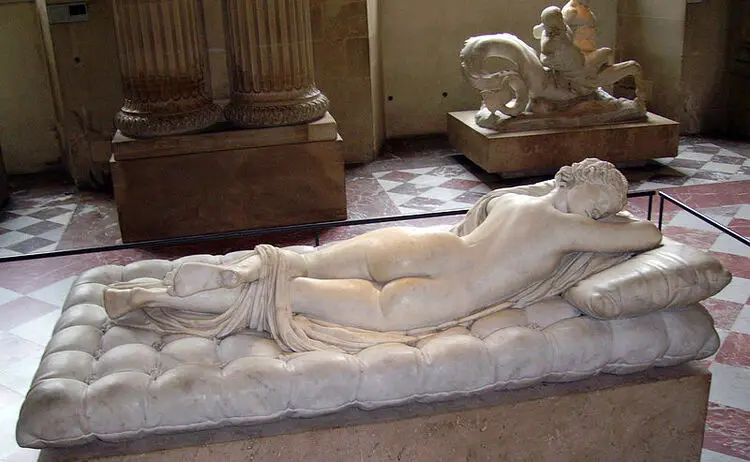
This marble statue shows a sleeping figure on a soft-looking mattress.
From the front, the body appears female, but from the back, you see male features.
It’s based on a story from Greek mythology and shows how detailed and realistic ancient sculpture could be.
The Four Seasons by Giuseppe Arcimboldo
Voir cette publication sur Instagram
These strange but fun portraits are made of fruits, vegetables, flowers, and leaves.
Each one represents a season. For example, “Spring” uses fresh flowers, while “Winter” has dry branches.
They show how creative and playful art can be.
Psyche Revived by Cupid’s Kiss by Antonio Canova
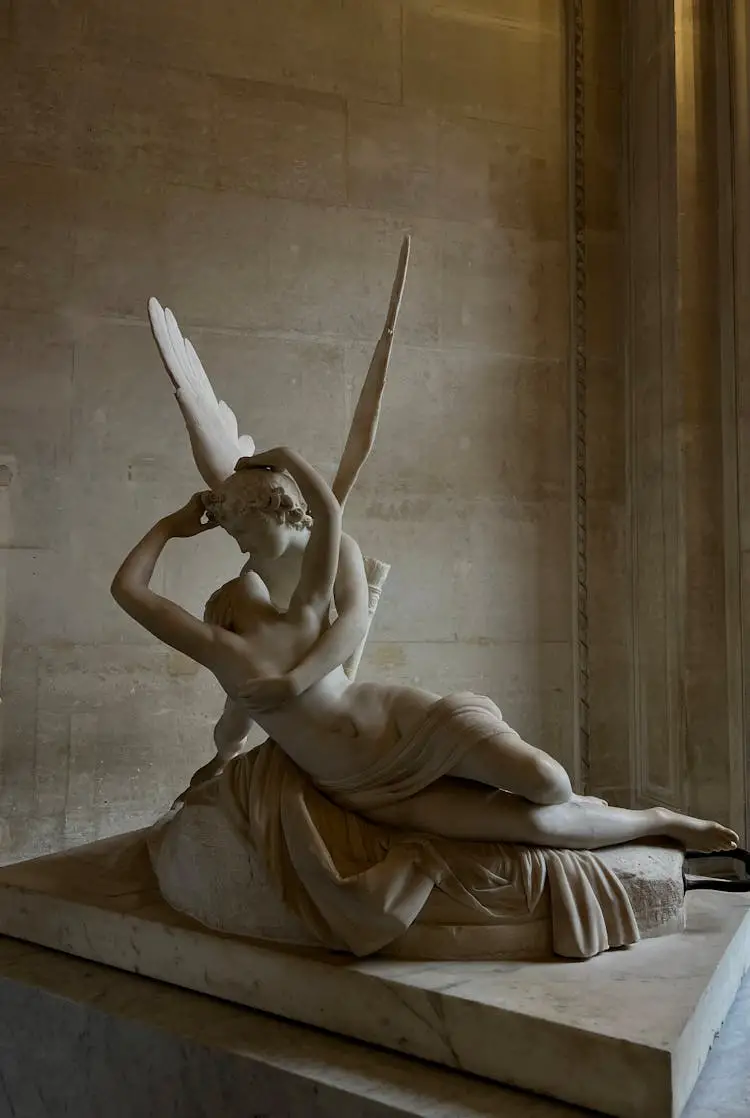
This marble sculpture shows Cupid gently waking Psyche with a kiss.
Their arms form a heart shape, and the details — like the feathers on Cupid’s wings — are very fine.
It’s a romantic and graceful scene from ancient mythology.
Dying Slave by Michelangelo
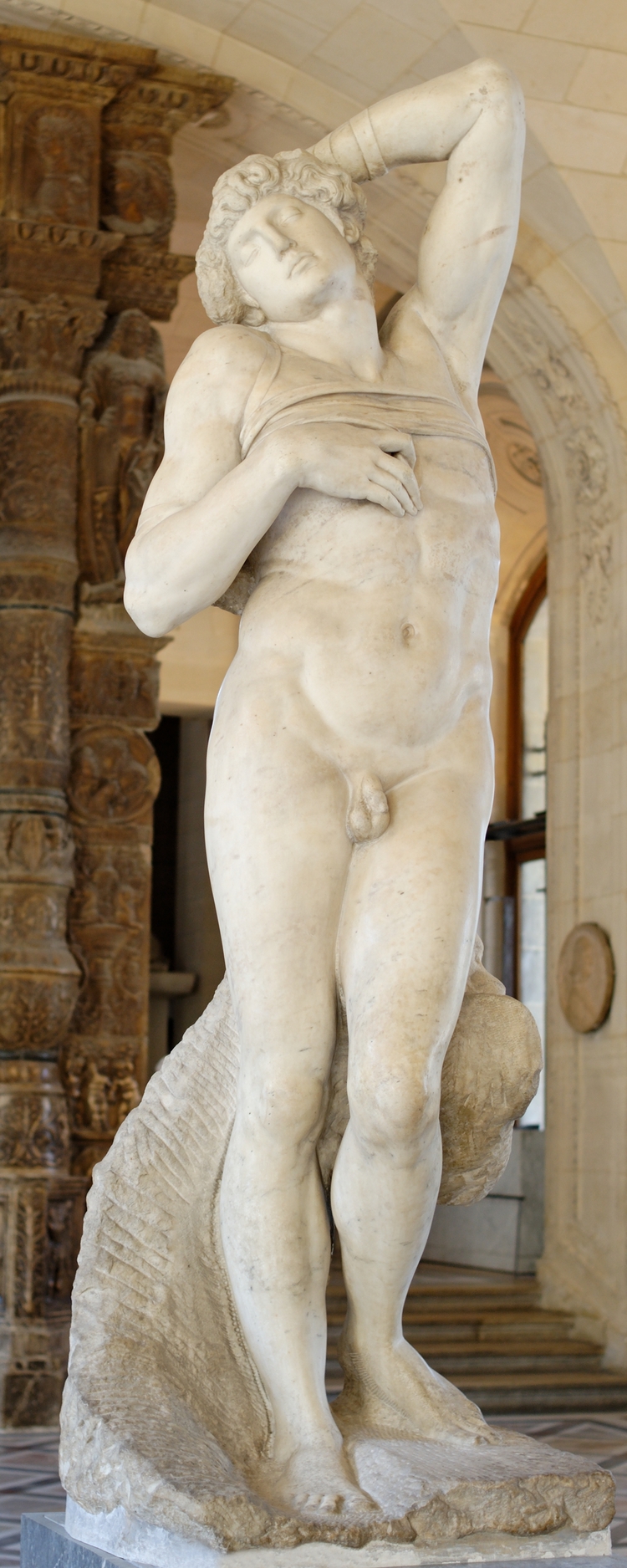
This sculpture shows a young man with his head tilted and arms raised, as if he’s fading or trapped.
The muscles and expression are full of emotion.
Michelangelo carved it for a tomb that was never finished.
It’s one of his most touching works.
Great Sphinx of Tanis
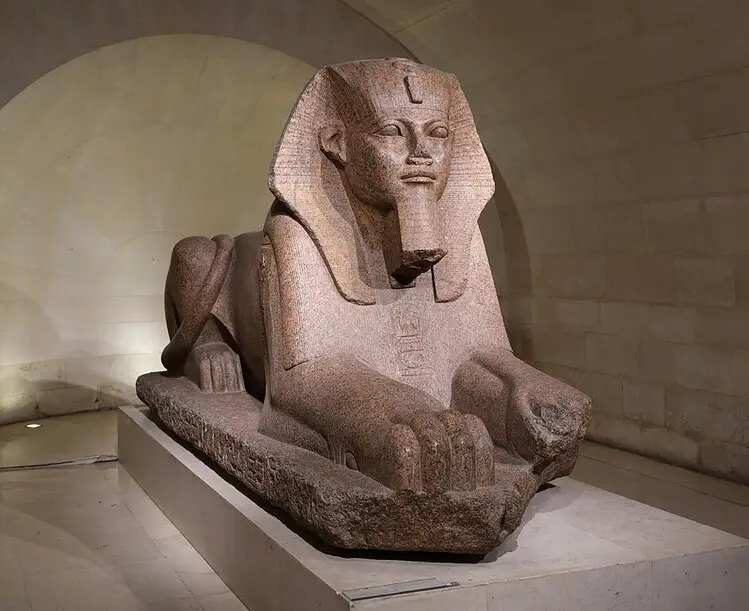
This giant statue has the body of a lion and the head of a pharaoh.
It comes from ancient Egypt and is made of granite.
It’s one of the largest sphinx statues outside of Egypt and sits near other treasures in the Louvre’s Egyptian collection.
Hidden Gems Most People Walk Right Past
Small Rooms, Big Surprises
The Egyptian Rooms
Voir cette publication sur Instagram
These rooms hold thousands of years of history.
You can see mummies, animal statues, jewelry, and even everyday objects like combs and toys.
The collection shows how advanced and artistic ancient Egyptian life was.
Islamic Art Pavilion
Voir cette publication sur Instagram
A bright, modern-looking area under a golden canopy.
It includes beautiful ceramics, carpets, glassware, and calligraphy from across the Islamic world — from Spain to India.
The shapes and colors are often geometric and very detailed.
Medieval Louvre Foundations
Voir cette publication sur Instagram
Deep underground, you can walk through the remains of the original medieval castle that stood before the Louvre became a palace.
You’ll see thick stone walls and the base of an old moat.
It’s quiet, cool, and feels like a step back in time.
Quiet Spots for a Break
Cour Puget and Cour Marly
Voir cette publication sur Instagram
These two large indoor courtyards hold marble sculptures and let in natural light through glass ceilings.
They’re great places to sit, relax, and enjoy the art without big crowds.
The mix of plants, light, and stone feels peaceful.
Voir cette publication sur Instagram
Galleries with Benches and Light
Some areas, especially in the painting wings, have wide halls with benches.
These are perfect for sitting and looking at one piece for longer, or just taking a break before continuing your visit.
Tips for Seeing the Museum Without Feeling Overwhelmed
How to Plan Your Route
Get a museum map or download the Louvre app before you go.
Pick one or two parts of the museum — like Greek sculpture or 18th-century French art — and focus on those.
The museum is huge, so trying to see everything in one visit will be too much.
When to Go

Go on a weekday morning or later in the afternoon for fewer crowds.
Avoid weekends, holidays, and the first Sunday of each month (when entrance is free, but it gets very crowded).
What to Bring (And What Not To)
Bring a small bag with water and maybe a snack, but big backpacks aren’t allowed in the galleries.
Lockers are available.
Wear comfortable shoes, because you’ll walk a lot.
Visiting With Kids, Limited Time, or Limited Mobility
If You Only Have 2 Hours
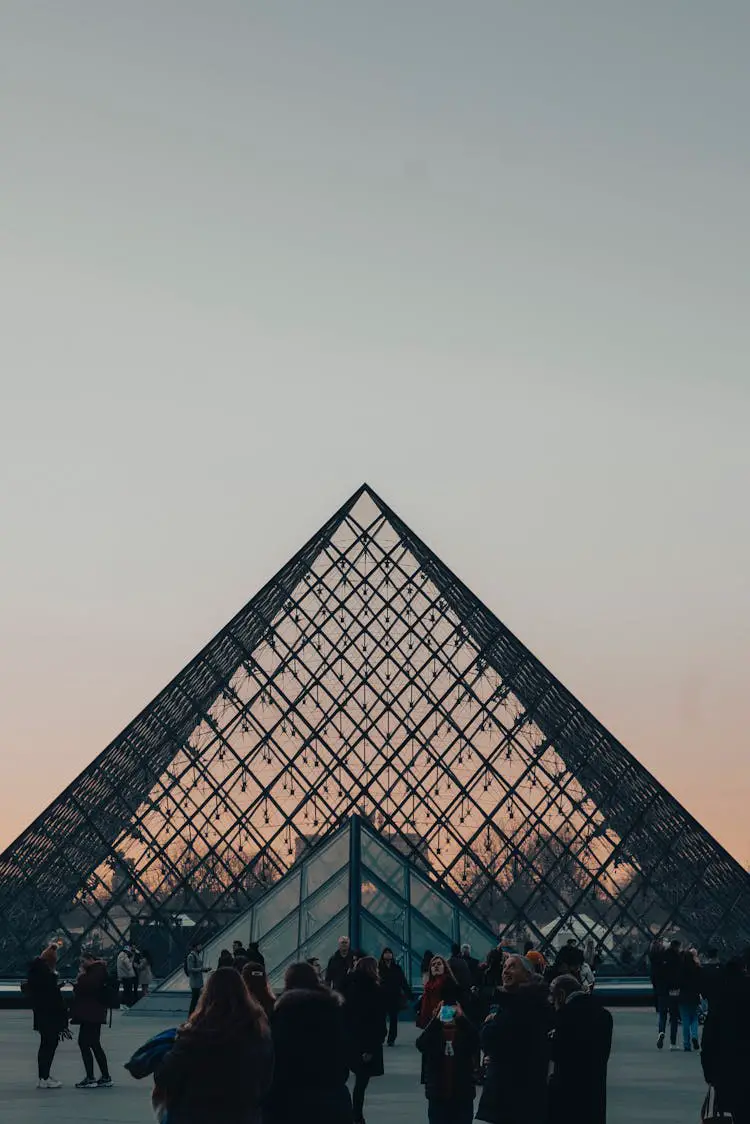
Start at the Pyramid or Carrousel du Louvre entrance.
Head to the Denon Wing to see the Mona Lisa, Winged Victory, and other highlights.
Follow the signs for a quick way out when you’re done.
Visiting With Kids
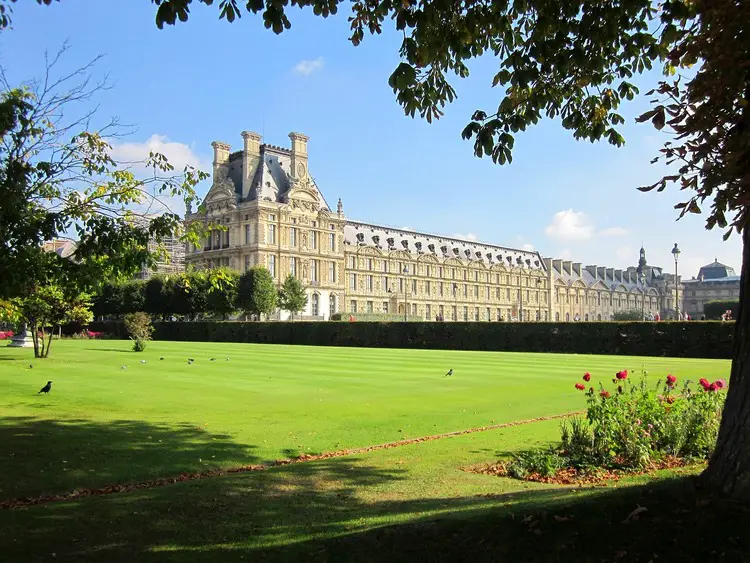
Children usually love the Egyptian collection, statues, and any artwork with animals or action.
You can play “spot the detail” games in paintings.
When they need a break, the Tuileries Garden is nearby with open space and snack spots.
Accessibility Tips
The Louvre has elevators, ramps, and staff who can help.
Entry is free for disabled visitors and one guest.
You can ask for wheelchairs or folding stools at the welcome desk.
How Much Time You Need Inside
For First-Time Visitors
Plan at least 2 to 4 hours to see the main works and enjoy your visit without feeling rushed.
For Art Lovers or Repeat Visitors
You can spend a whole day or even multiple visits if you want to explore deeply.
Focus on one section per visit — like Renaissance paintings or Islamic art.
If You’re Short on Time
Choose just one floor or collection, and enjoy it slowly.
It’s better to see a few things well than to rush through too much.
How to Buy Tickets (And Skip the Lines)
Best Way to Get Tickets
Buy tickets from the official Louvre website.
Choose a timed entry slot so you know exactly when to arrive. This helps you skip the long ticket line.
Skip-the-Line Tips
The glass pyramid entrance is popular, so go early.
The Carrousel du Louvre (underground mall) often has a shorter line. You can also use it in bad weather.
Other Entry Options
The Paris Museum Pass gives you fast entry to many museums in the city.
A guided tour is also a good way to skip lines and learn more as you go.
Is It Worth Going Up to the Top Floor?
What You’ll Find Up There
Voir cette publication sur Instagram
The top floor has French paintings from the 18th and 19th centuries.
You’ll see works by David, Delacroix, and others. It’s quieter and less crowded than the main floor, so you can enjoy the art in peace.
Who Should Skip It
If you’re short on time or feeling tired, it’s okay to skip this floor.
The main highlights are on the lower levels.
Beyond the Art: Cafés, Courtyards, and Gardens
Where to Take a Break
Voir cette publication sur Instagram
The Café Richelieu has a nice view of the glass pyramid.
Café Marly is more stylish and located under the museum’s arches.
Both offer drinks, snacks, and a chance to rest your feet.
Voir cette publication sur Instagram
What’s Nearby
- Tuileries Garden – Right next to the Louvre. Great for walking, resting, or having a picnic.
Voir cette publication sur Instagram
- Pont des Arts – A lovely pedestrian bridge with great views of the river Seine.
Voir cette publication sur Instagram
- Rue de Rivoli – A long street with shops, bakeries, and covered arcades, perfect for a stroll after your visit.
Voir cette publication sur Instagram

With a passion for travel and having visited over 50 countries, Dorian is eager to share his favorite spots and expert tips to help you explore Paris and France like a local.



